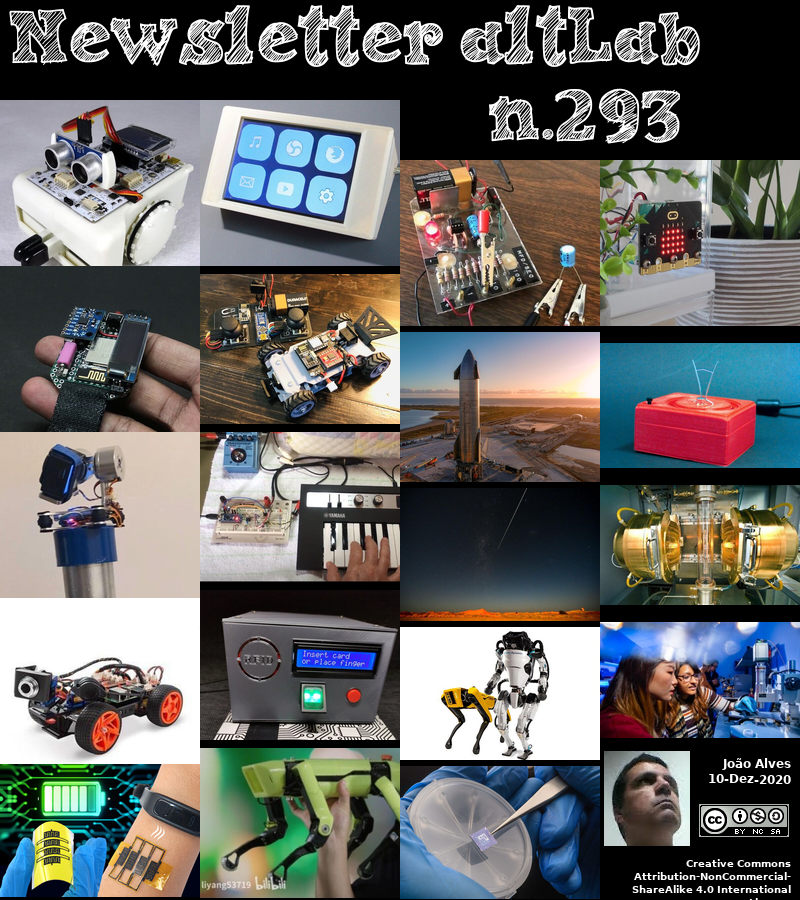2020-12-10 - Nº 293
Editorial
Esta é a Newsletter Nº 293 que se apresenta com o mesmo formato que as anteriores. Se gostar da Newsletter partilhe-a!
Todas as Newsletters encontram-se indexadas no link.
Esta Newsletter tem os seguintes tópicos:
Faz hoje anos que nascia, em 1804, o matemático alemão Carl Gustav Jacob Jacobi. Ele, com o trabalho independente de Niels Henrik Abel da Noruega, fundou a teoria das funções elípticas. Ele trabalhou igualmente em funções abelianas e descobriu as funções hiperlípticas. Jacobi aplicou o seu trabalho em funções elípticas à teoria dos números. Ele também investigou análise matemática e geometria. Jacobi realizou importantes pesquisas em equações diferenciais parciais da primeira ordem e aplicou-as às equações diferenciais da dinâmica. O seu trabalho sobre determinantes é importante em dinâmica e mecânica quântica e ele estudou o determinante funcional agora chamado de jacobiano.
Por fim, faz hoje anos que nascia, em 1815, a matemática inglesa Ada Lovelace. Ela foi educada em particular, no estudo da matemática e da astronomia, além dos temas mais tradicionais. Ela parece ter desenvolvido uma ambição inicial para ser uma cientista famosa. Depois de conhecer Charles Babbage em 1833, ela começou a ajudar no desenvolvimento do seu motor analítico e publicou notas sobre o trabalho. Ela foi uma das primeiras a reconhecer o potencial dos computadores e foi chamada de primeira programadora de computador. (A linguagem de programação Ada tem seu nome.)
Faz hoje 153 anos que os primeiros semáforos a gás foram instalados do lado de fora das Casas do Parlamento, em Londres. Proposto pelo engenheiro ferroviário britânico J. P. Knight para controlar o tráfego de carruagens de cavalos, as luzes de gás eram controladas manualmente por um policia que usava braços semafóricos.
Nesta semana que passou a cápsula da sonda Japonesa Hayabusa 2, aterrou. Lançada à cerca de seis anos para recolher amostras de asteróides no espaço aterrou no passado sábado na superfície da Terra.
Também nesta semana que passou, a SpaceX, depois de alguns adiamentos lá lançou o foguetão SN8 num voo de teste. O objectivo era subir até uma altitude de 12.5 Kms e depois de realizar algumas manobras complexas no ar — incluindo o "belly flop" como o que a ultima Nave realizará ao voltar à Terra em voos operacionais — e, em seguida, pousar em segurança perto da base de lançamento. O foguetão gigante de 50m de altura conseguiu, aparentemente fazer as manobras com sucesso, com excepção da ultima. O foguetão atingiu a sua posição de aterragem, mas desceu demasiado rápido, explodindo numa bola de fogo 6 minutos e 42 segundos após a descolagem.
Na Newsletter desta semana apresentamos diversas noticias, artigos científicos assim como projetos de maker. É apresentado o livro Help! My Computer is Broken e a revista newelectronics de 8 Dezembro.
 João Alves ([email protected])
João Alves ([email protected])
O conteúdo da Newsletter encontra-se sob a licença  Creative Commons Attribution-NonCommercial-ShareAlike 4.0 International License.
Creative Commons Attribution-NonCommercial-ShareAlike 4.0 International License.
Novidades da Semana

The Results of “Hayhabusa2” Re-entry Capsule Recovery
"On December 6, 2020, Japan Aerospace Exploration Agency (JAXA) has recovered the body of the capsule, the heat shields, and the parachute of the "Hayabusa2" re-entry capsule in the Woomera Prohibited Area (WPA). Tomorrow, the capsule recovery team will extract gas out of the capsule at the operation headquarters in Australia. Researchers considered the gas originates from the precious sample from Asteroid Ryugu. After the capsule separation, the spacecraft performed trajectory correction maneuvers three times every 30 minutes to depart from the Earth's sphere from 15:30 to 16:30 on December 5 (JST). The Hayabusa2 team members confirmed the trajectory correction maneuvers' success at 16:31 on the same day (JST). The current status of the spacecraft is normal." [...]

SpaceX's Starship SN8 prototype soars on epic test launch, with explosive landing
"SpaceX's Starship spaceflight system just took a big step on its path to Mars. The latest Starship prototype, a shiny silver vehicle known as SN8, launched on an epic high-altitude test flight today (Dec. 9), taking off at 5:45 p.m. EST (2245 GMT) from SpaceX's facility near the South Texas village of Boca Chica. The goal was to soar about 7.8 miles (12.5 kilometers) into the sky, perform some complex aerial maneuvers — including a "belly flop" like the one the final Starship will perform when coming back to Earth on operational flights — and then land safely near the launch stand. The 165-foot-tall (50 meters) SN8 appeared to notch all of these big milestones, except for the final one: The vehicle hit its landing mark but came in too fast, exploding in a dramatic fireball 6 minutes and 42 seconds after liftoff. SN8's rapid unplanned disassembly did nothing to dampen the spirits of SpaceX founder and CEO Elon Musk, who was thrilled by the results of today's flight. "Fuel header tank pressure was low during landing burn, causing touchdown velocity to be high & RUD, but we got all the data we needed!" [...]
Outras Notícias
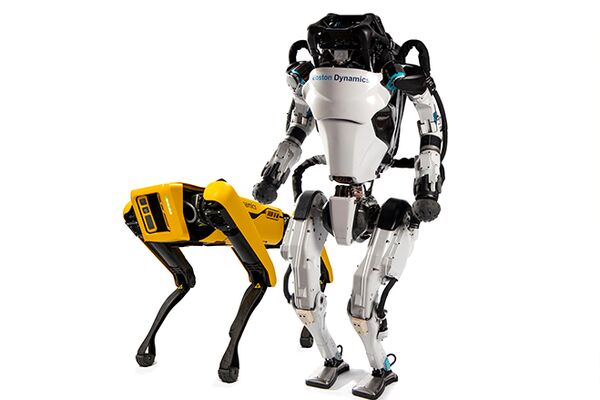
Hyundai Motor acquires Boston Dynamics from SoftBank for almost $1 bn
"Hyundai Motor Co. is acquire the US robotics firm Boston Dynamics Inc. from SoftBank Group for slightly less than 1 trillion won ($921 million) and will finalize the acquisition at its Dec. 10 board meeting, according to sources with knowledge of the matter on Dec. 8. The acquisition will become the first buyout deal for Chung Euisun as Hyundai Motor Group’s chairman since he assumed the chairmanship last October, accelerating the group’s push into the future mobility market. Hyundai has chosen robotics as one of its new growth engines, alongside electric vehicles and hydrogen fuel cell cars. Hyundai Motor will finance about half of the acquisition price, or more than 400 billion won, with its affiliates including auto parts maker Hyundai Mobis Co. paying for the remainder, the sources told the Market Insight, The Korea Economic Daily's capital market news outlet. Boston Dynamics is famous for technologically advanced but unprofitable machines such as Spot, a maneuverable dog-like robot, while Hyundai Motor has focused on wheeled robots intended for factory use. Spot, unveiled in 2015, is a four-legged robot that can trot, climb stairs and open doors." [...]
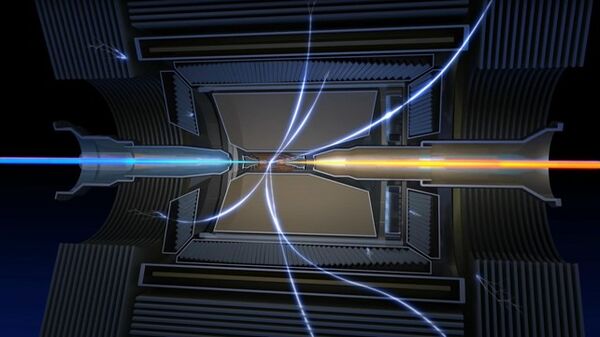
Faster Physics: How AI and NVIDIA A100 GPUs Automate Particle Physics
"What are the fundamental laws that govern our universe? How did the matter in the universe today get there? What exactly is dark matter? The questions may be eternal, but no human scientist has an eternity to answer them. Now, thanks to NVIDIA technology and cutting-edge AI, the more than 1,000 collaborators from 26 countries working on the Belle II particle physics experiment are able to learn more about these big questions, faster. The Belle II detector, based just north of Tokyo, reproduces the particles created during the early universe by smashing high-energy electrons and anti-electrons together." [...]

NXP Announces a Complete Suite of Radar Sensor Solutions that Can Surround Vehicles in a 360-degree Safety Cocoon
"NXP Semiconductors, the leader in automotive radar, has announced a complete suite of new radar sensor chipset solutions that can surround vehicles in a 360-degree safety cocoon and enable the identification and classification capabilities of imaging radar. The solutions, comprised of new NXP radar processors and 77GHz transceivers, offer carmakers flexible and scalable configurations that address NCAP requirements for corner and front radar applications while offering 4D imaging radar’s first commercially viable path to volume production. 4D imaging radar expands radar’s capabilities from measuring range and speed to include direction, angle of arrival, and elevation measurement. Together, these solutions are part of the effort to reduce the 1.3 million yearly road deaths and represent radar’s evolution as a central part of driver assistance systems. Radar is a core advanced driving assistance (ADAS) technology for both traditional carmakers focused on automated driving levels 1-3 and for mobility as service innovators developing robotaxi and safe delivery applications for levels 4 and 5 automation. NXP’s new suite of radar sensing solutions meet both scenarios and provide a dedicated and optimized approach with critical scalability and design re-use to help carmakers address the needs of their diverse brand and model portfolios." [...]
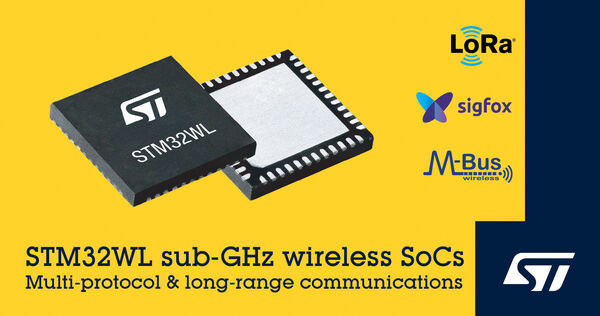
STMicroelectronics Announces Mass-Market Availability of STM32WL LoRa®-Compatible Wireless System-on-Chip Family
"STMicroelectronics, a global semiconductor leader serving customers across the spectrum of electronics applications, has expanded availability of its market-unique STM32WL long-range sub-GHz wireless system-on-chip (SoC) family, adding flexible configurations and package options for diverse mass-market applications. As the only SoC ICs featured to connect devices to LoRa-based Low-Power Wide-Area Networks (LPWANs), the STM32WL series lets users create Internet-of-Things (IoT) devices that are extremely compact, energy efficient, and reliable. LPWANs provide cost-effective connectivity over large geographical areas and in remote locations, extending the IoT’s reach and enabling smart technologies to add greater value in industries from utilities and agriculture to shipping, transportation, and others. “Long-range IoT networks like LoRaWAN or Sigfox now cover the globe, ready to connect innovative and highly useful smart devices in applications such as environmental monitoring and asset tracking,” said Ricardo de Sa Earp, Group Vice President, Microcontroller Division General Manager, STMicroelectronics. “Mass-market access to our unique single-chip integrated microcontroller and multi-modulation radio will broaden development of exciting new products that leverage these networks and deliver unparalleled functionality, usability, and value.” The STM32WL series combines ST’s STM32 ultra-low-power microcontroller (MCU) architecture with a sub-GHz radio subsystem that supports multiple modulation schemes. These include both LoRa, which allows high receiving sensitivity at low RF signal power, and (G)FSK, (G)MSK and BPSK modulation used by Sigfox and wireless Meter-Bus (wM-Bus) protocols for instance as well as other proprietary protocols or sub-GHz standards." [...]
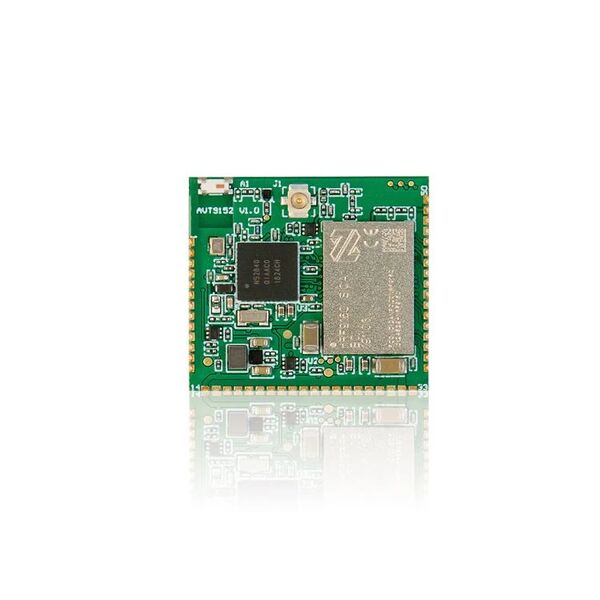
LTE-M/NB-IoT and Bluetooth LE-powered module supports processor-intensive IoT applications in compact package
"Avnet’s AVT9152 module integrates both Nordic’s nRF9160 SiP and nRF52840 SoC to enable rapid IoT product development Nordic Semiconductor today announces that Avnet Asia, a global technology solutions company, has selected Nordic’s nRF9160 low power System-in-Package (SiP) with integrated LTE-M/NB-IoT modem and GPS, and nRF52840 Bluetooth® 5.2/Bluetooth Low Energy (Bluetooth LE) advanced multiprotocol System-on-Chip (SoC) to provide the cellular IoT and short range wireless connectivity for its ‘AVT9152’ module. The 26 by 28mm AVT9152 module is said to be the smallest module to support LTE-M/NB-IoT, Bluetooth LE and GPS, and can be integrated into a range of embedded applications including beacons for Covid-19 contact tracing, logistics and asset tracking, vending machines, kiosk terminals, medical devices, and smart building automation. Complex application support The Nordic nRF9160 SiP’s Arm Cortex-M33 processor and the SoC’s 64MHz, 32-bit Arm® Cortex® M4 processor with floating point unit (FPU) equip the module with ample computational power to support a range of complex and processor-intensive IoT applications. The module offers a high degree of flexibility and scalability for IoT product development and completing an IoT design can be as straightforward as connecting a power source, sensors, and an antenna to the module. The simple development cycle shortens time-to-market. The nRF9160 is a low power SiP, certified for global cellular IoT applications, comprising a multimode LTE-M/NB-IoT modem with integrated RF front end (RFFE), GPS, and power management in a compact package." [...]

Renesas Extends Arm Cortex-Based MCU Family with RA4M3 MCU Group for Industrial and IoT Applications
"Renesas Electronics Corporation (TSE:6723), a premier supplier of advanced semiconductor solutions, today expanded its RA4 Series microcontrollers (MCUs) with the new 32-bit RA4M3 Group of MCUs. The RA4M3 MCUs boost operating performance up to 100 MHz using the Arm® Cortex®-M33 core based on Armv8-M architecture. Featuring industry-leading performance, Arm TrustZone® technology, Renesas’ Secure Crypto Engine, and a suite of new memory enhancements, the RA4M3 Group makes it easy to develop safe and secure IoT edge devices for low-power applications, such as security, metering, industrial, and HVAC applications. “I am excited about the rapid expansion of the Renesas RA MCU family following our RA6M4 MCU Group introduction last October,” said Roger Wendelken, Senior Vice President of Renesas’ IoT and Infrastructure Business Unit. “While RA6M4 target applications demand superior performance and advanced security, the RA4M3 Group offers a well-balanced combination of performance and power consumption with the same advanced security and safety. In addition, customers can take full advantage of the flexibility for memory expansion options that are typical for a broad range of industrial and IoT applications that require continuous innovation.” The RA4M3 Group is designed for low-power IoT applications that require a balance of high performance, strong security, and higher memory." [...]

New Raspberry Pi OS release — December 2020
"Well, in a year as disrupted and strange as 2020, it’s nice to know that there are some things you can rely on, for example the traditional end-of-year new release of Raspberry Pi OS, which we launch today. Here’s a run-through of the main new features that you’ll find in it. Chromium We’ve updated the Chromium browser to version 84. This has taken us a bit longer than we would have liked, but it’s always quite a lot of work to get our video hardware acceleration integrated with new releases of the browser. That’s done now, so you should see good-quality video playback on sites like YouTube. We’ve also, given events this year, done a lot of testing and tweaking on video conferencing clients such as Google Meet, Microsoft Teams, and Zoom, and they should all now work smoothly on your Raspberry Pi’s Chromium." [...]
Ciência e Tecnologia

Breakthrough optical sensor mimics human eye, a key step toward better artificial intelligence
"Researchers at Oregon State University are making key advances with a new type of optical sensor that more closely mimics the human eye’s ability to perceive changes in its visual field. The sensor is a major breakthrough for fields such as image recognition, robotics and artificial intelligence. Findings by OSU College of Engineering researcher John Labram and graduate student Cinthya Trujillo Herrera were published today in Applied Physics Letters. Previous attempts to build a human-eye type of device, called a retinomorphic sensor, have relied on software or complex hardware, said Labram, assistant professor of electrical engineering and computer science. But the new sensor’s operation is part of its fundamental design, using ultrathin layers of perovskite semiconductors – widely studied in recent years for their solar energy potential – that change from strong electrical insulators to strong conductors when placed in light. “You can think of it as a single pixel doing something that would currently require a microprocessor,” said Labram, who is leading the research effort with support from the National Science Foundation." [...]
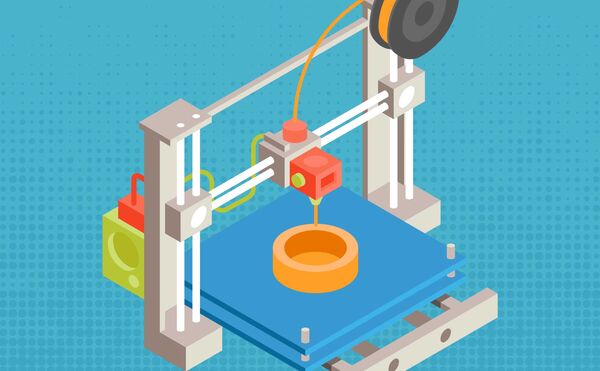
Beautiful Physics Governs Complex Energy-matter Interactions
"A research team led by TAO SUN, associate professor of materials science and engineering at the University of Virginia, has made two discoveries that can expand additive manufacturing in aerospace and other industries that rely on strong metal parts. Additive manufacturing has contributed to aircraft production for years, as reported by the Association for Manufacturing Technology. However, additive manufacturing also generates defects in the microstructure of a finished part, limiting its role to the fabrication of ductwork, interior components and other non-critical parts. Additive manufacturing of safety-regulated parts will help the industry achieve its aspirations for efficient and stable supply chain management, as well as fuel savings and emissions reductions that accompany a lighter aircraft. Sun’s team and collaborators have discovered why structural defects occur during the additive manufacture of parts made from a high-strength, light-weight titanium alloy widely used in aerospace applications. They present a process map—the blueprint the machine uses to create a part—to help manufacturers avoid generating defects during a common additive manufacturing technique called laser powder bed fusion." [...]
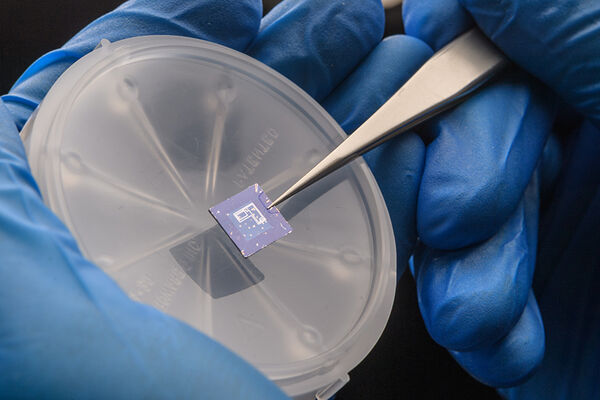
New transistor design disguises key computer chip hardware from hackers
"A hacker can reproduce a circuit on a chip by discovering what key transistors are doing in a circuit – but not if the transistor “type” is undetectable. Purdue University engineers have demonstrated a way to disguise which transistor is which by building them out of a sheet-like material called black phosphorus. This built-in security measure would prevent hackers from getting enough information about the circuit to reverse engineer it. The findings appear in a paper published Monday (Dec. 7) in Nature Electronics. Reverse engineering chips is a common practice – both for hackers and companies investigating intellectual property infringement. Researchers also are developing x-ray imaging techniques that wouldn’t require actually touching a chip to reverse engineer it." [...]

Aluminium alloy research could benefit manned space missions
"Manned space missions in spacecraft made of aluminium that is light yet resistant to radiation could be a step nearer following research involving a world-leading facility at the University of Huddersfield. The MIAMI-2 – Microscopes and Ion Accelerators for Materials Investigations – facility has helped Dr Matheus Tunes investigate a new alloy that will harden aluminium without increasing its weight significantly. Spacecraft launched from Earth need to be light, but still have the right amount of fuel to see them achieve orbit. If too heavy, the amount of fuel required would be prohibitive, but once outside of the Earth’s protective magnetic field, a vehicle may then be exposed to potentially destructive amounts of solar radiation, which becomes more important for any long duration mission such as to Mars. Alloys that harden aluminium for space travel Making spacecraft from aluminium is one solution, as aluminium is a light yet strong material. Alloys help aluminium become harder via precipitation strengthening, but the radiation encountered in space can dissolve the hardening precipitates with potentially disastrous and fatal consequences for astronauts." [...]
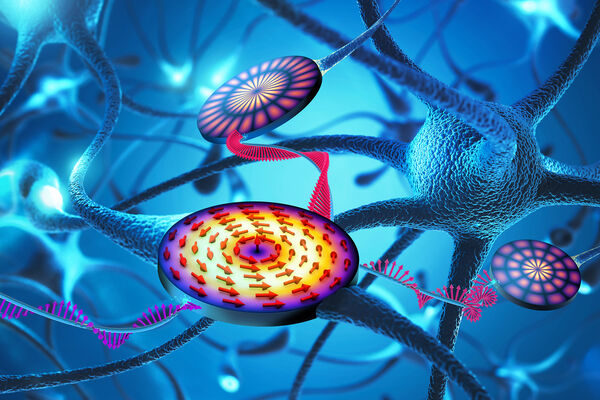
HZDR team develops component for neuromorphic computer
"Neural networks are some of the most important tools in artificial intelligence (AI): they mimic the operation of the human brain and can reliably recognize texts, language and images, to name but a few. So far, they run on traditional processors in the form of adaptive software, but experts are working on an alternative concept, the “neuromorphic computer”. In this case, the brain’s switching points – the neurons – are not simulated by software but reconstructed in hardware components. A team of researchers at the Helmholtz-Zentrum Dresden-Rossendorf (HZDR) has now demonstrated a new approach to such hardware – targeted magnetic waves that are generated and divided in micrometer-sized wafers. Looking to the future, this could mean that optimization tasks and pattern recognition could be completed faster and more energy efficient. The researchers have presented their results in the journal Physical Review Letters (DOI: 10.1103/PhysRevLett.125.207203)." [...]
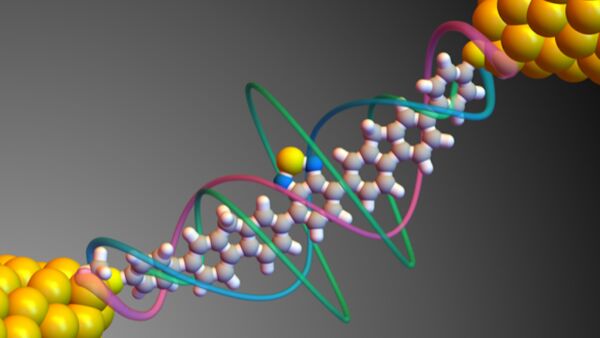
Harnessing Quantum Properties to Create Single-Molecule Devices
"Columbia team discovers 6nm-long single-molecule circuit with enormous on/off ratio due to quantum interference; finding could enable faster, smaller, and more energy-efficient devices Researchers, led by Columbia Engineering Professor Latha Venkataraman, report today that they have discovered a new chemical design principle for exploiting destructive quantum interference. They used their approach to create a six-nanometer single-molecule switch where the on-state current is more than 10,000 times greater than the off-state current—the largest change in current achieved for a single-molecule circuit to date. This new switch relies on a type of quantum interference that has not, up to now, been explored. The researchers used long molecules with a special central unit to enhance destructive quantum interference between different electronic energy levels. They demonstrated that their approach can be used to produce very stable and reproducible single-molecule switches at room temperature that can carry currents exceeding 0.1 microamps in the on-state. The length of the switch is similar to the size of the smallest computer chips currently on the market and its properties approach those of commercial switches." [...]
New semiconductor detector shows promise for medical diagnostics and homeland security
"Security officials are tasked with preventing criminals from smuggling dangerous materials into a country, and detecting nuclear substances has been difficult and costly. Now Northwestern University researchers have developed new devices based on a low-cost material to aid in the detection and identification of radioactive isotopes. Using cesium lead bromide in the form of perovskite crystals, the research team found they were able to create highly efficient detectors in both small, portable devices for field researchers and very large detectors. The results are more than a decade in the making. Northwestern professor Mercouri Kanatzidis, who led the research, said that in addition to being less costly than typical devices, the new method for detecting gamma rays is also highly capable at differentiating between rays of different energies. This method allows users to identify legal versus illegal gamma rays." [...]
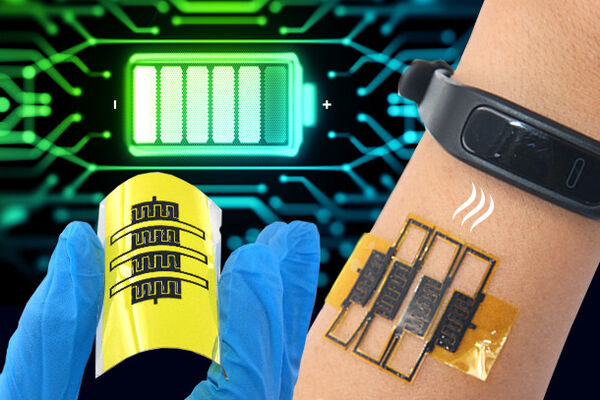
Stretchable micro-supercapacitors to self-power wearable devices
"A stretchable system that can harvest energy from human breathing and motion for use in wearable health-monitoring devices may be possible, according to an international team of researchers, led by Huanyu “Larry” Cheng, Dorothy Quiggle Career Development Professor in Penn State's Department of Engineering Science and Mechanics. The research team, with members from Penn State and Minjiang University and Nanjing University, both in China, recently published its results in Nano Energy. According to Cheng, current versions of batteries and supercapacitors powering wearable and stretchable health-monitoring and diagnostic devices have many shortcomings, including low energy density and limited stretchability. “This is something quite different than what we have worked on before, but it is a vital part of the equation,” Cheng said, noting that his research group and collaborators tend to focus on developing the sensors in wearable devices. “While working on gas sensors and other wearable devices, we always need to combine these devices with a battery for powering. Using micro-supercapacitors gives us the ability to self-power the sensor without the need for a battery.” An alternative to batteries, micro-supercapacitors are energy storage devices that can complement or replace lithium-ion batteries in wearable devices." [...]
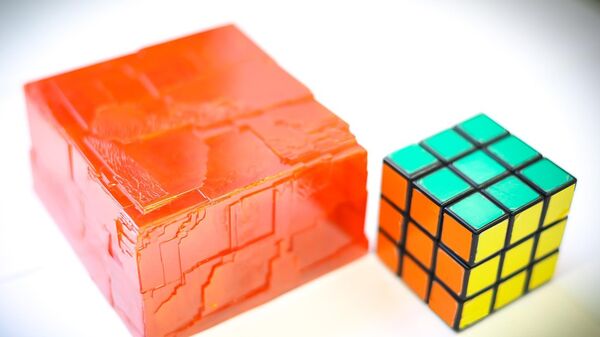
“Game changer” perovskite can detect gamma rays
"Scientists at EPFL have developed a game-changing perovskite material that can be used as a cheaper and highly efficient alternative to gamma-ray detectors. Perovskites are materials made up of organic compounds bound to a metal. Propelled into the forefront of materials’ research because of their structure and properties, perovskites are earmarked for a wide range of applications, including in solar cells, LED lights, lasers, and photodetectors. That last application, photo – or light – detection, is of particular interest to scientists at EPFL’s School of Basic Sciences who have developed a perovskite that can detect gamma rays. Led by the labs of Professors László Forró and Andreas Pautz, the researchers have published their work in Advanced Science. “This photovoltaic perovskite crystal, grown in this kilogram size, is a game changer,” says Forró." [...]
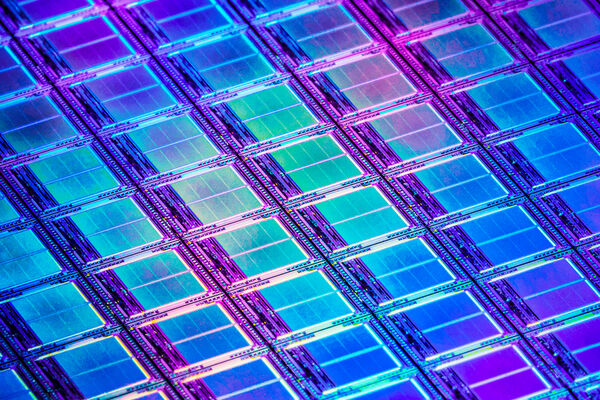
Discovery suggests new promise for nonsilicon computer transistors
"Once deemed suitable only for high-speed communication systems, an alloy called InGaAs might one day rival silicon in high-performance computing. For decades, one material has so dominated the production of computer chips and transistors that the tech capital of the world — Silicon Valley — bears its name. But silicon’s reign may not last forever. MIT researchers have found that an alloy called InGaAs (indium gallium arsenide) could hold the potential for smaller and more energy efficient transistors. Previously, researchers thought that the performance of InGaAs transistors deteriorated at small scales. But the new study shows this apparent deterioration is not an intrinsic property of the material itself." [...]
Multiple Semiconductor Type Switching To Boost Thermoelectric Conversion of Waste Heat
"Scientists at Tokyo Institute of Technology (Tokyo Tech) demonstrate double charge carrier type switching of tin monoselenide (SnSe) semiconductor by doping of antimony (Sb). The SnSe carrier type switches from p-type to n-type, and re-switches to p-type as doping increases, due to the switching of major Sb substitution site from Se to Sn, promising reliable charge polarity control, leading to realization of SnSe-based p/n homojunction thermoelectric device for converting waste heat into electricity and new insights on impurity doping of compound semiconductors. In recent years, the energy consumption in developed countries has been rather wasteful. Nearly two-thirds of the total energy is typically discarded into the environment as "waste heat," which ends up contributing to global warming. Finding a way to productively use this heat has been at the forefront of every material researcher's priority. One of the various possible ways to recover this waste heat as electricity is using what is known as "thermoelectric conversion"—a process that uses temperature difference in semiconductors to directly convert into electric voltage." [...]
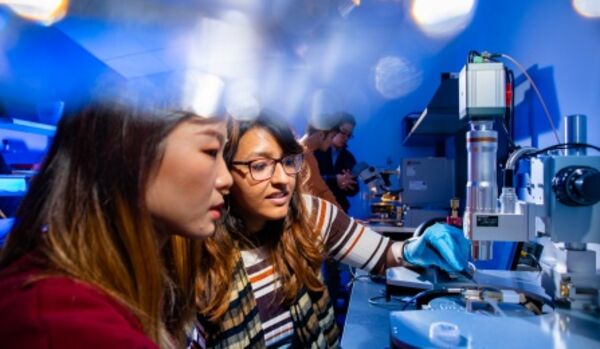
Atom-thin transistor uses half the voltage of common semiconductors, boosts current density
"University at Buffalo researchers are reporting a new, two-dimensional transistor made of graphene and the compound molybdenum disulfide that could help usher in a new era of computing. As described in a paper accepted at the 2020 IEEE International Electron Devices Meeting, which is taking place virtually next week, the transistor requires half the voltage of current semiconductors. It also has a current density greater than similar transistors under development. This ability to operate with less voltage and handle more current is key to meet the demand for new power-hungry nanoelectronic devices, including quantum computers. “New technologies are needed to extend the performance of electronic systems in terms of power, speed, and density. This next-generation transistor can rapidly switch while consuming low amounts of energy,” says the paper’s lead author, Huamin Li, Ph.D., assistant professor of electrical engineering in the UB School of Engineering and Applied Sciences (SEAS)." [...]

Study finds fluorine as possible substitute for lithium in rechargeable batteries
"With increased use of rechargeable batteries to power modern technology, particularly electric vehicles, researchers have been looking for alternative materials for lithium-ion in rechargeable batteries. Modern batteries use lithium and cobalt, but these have a very limited supply. Materials scientists in the McKelvey School of Engineering at Washington University in St. Louis have found a potential alternative for lithium in fluorine, a relatively abundant and light element. Their research was printed Dec. 7 in the Journal of Materials Chemistry. Interestingly, the fluoride ion is the mirror opposite of the lithium ion, having the strongest attraction for electrons, which allows it to easily carry out electrochemical reactions. Researchers in Japan also are testing fluoride-ion batteries as possible replacements for lithium-ion batteries in vehicles." [...]

Ionic Defect Landscape in Perovskite Solar Cells Revealed
"Joint research work between Chemnitz University of Technology and Technische Universität Dresden under Chemnitz leadership reveals ionic defect landscape in metal halide perovskites - publication in renowned journal Nature Communications The group of so-called metal halide perovskites as materials has revolutionized the field of photovoltaics in recent years. Generally speaking, metal halide perovskites are crystalline materials that follow the structure ABX3, with varying composition. Here, A, B, and X can represent a combination of different organic and inorganic ions. These materials have a number of properties that are ideal for use in solar cells and could help to make optoelectronic devices such as lasers, light-emitting diodes (LEDs), or photodetectors much more efficient. With regard to the development of a resource- and energy-efficient technology, the relevance of research on these materials is very high. The advantageous properties of metal halide perovskites include their high light-harvesting capacity and their remarkable ability to efficiently convert solar energy into electrical energy." [...]
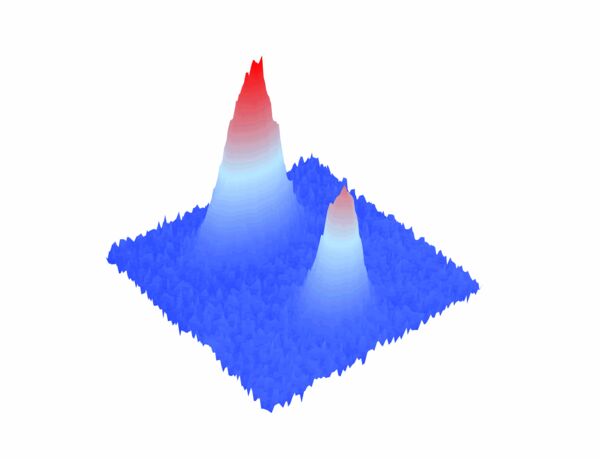
New JILA Tools ‘Turn On’ Quantum Gases of Ultracold Molecules
"JILA researchers have developed tools to “turn on” quantum gases of ultracold molecules, gaining control of long-distance molecular interactions for potential applications such as encoding data for quantum computing and simulations. The new scheme for nudging a molecular gas down to its lowest energy state, called quantum degeneracy, while suppressing chemical reactions that break up molecules finally makes it possible to explore exotic quantum states in which all the molecules interact with one another. The research is described in a Nature paper published online Dec. 9. JILA is a joint institute of the National Institute of Standards and Technology (NIST) and the University of Colorado Boulder. “Molecules are always celebrated for their long-range interactions, which can give rise to exotic quantum physics and novel control in quantum information science,” NIST/JILA Fellow Jun Ye said. “However, until now, nobody had figured out how to turn on these long-range interactions in a bulk gas.” “Now, all this has changed." [...]
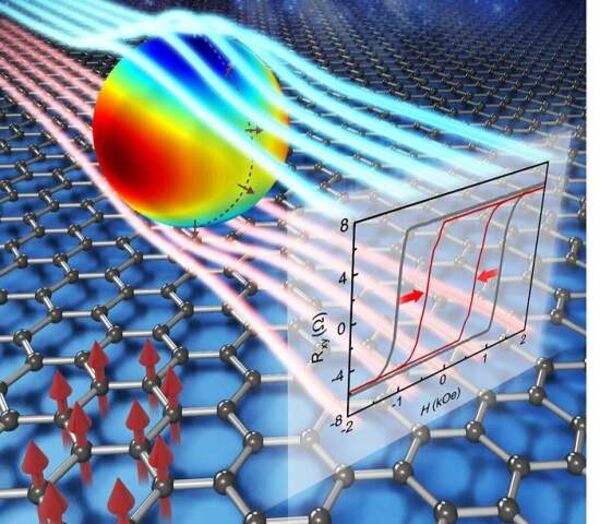
Energy-efficient magnetic RAM: A new building block for spintronic technologies
"Researchers at Pohang University of Science and Technology (POSTECH) and Seoul National University in South Korea have demonstrated a new way to enhance the energy efficiency of a non-volatile magnetic memory device called SOT-MRAM. Published in Advanced Materials, this finding opens up a new window of exciting opportunities for future energy-efficient magnetic memories based on spintronics. In modern computers, the random access memory (RAM) is used to store information. The SOT-MRAM (spin-orbit torque magnetic RAM) is one of the leading candidates for the next-generation memory technologies that aim to surpass the performance of various existing RAMs. The SOT-MRAM may operate faster than the fastest existing RAM (SRAM) and maintain information even after the electric energy supply is powered off whereas all fast RAMs existing today lose information as soon as the energy supply is powered off. The present level of the SOT-MRAM technology falls short of being satisfactory, however, due to its high energy demand; it requires large energy supply (or large current) to write information." [...]

Revolutionary superconducting magnet plate design and analysis
"In the production of integrated circuits (computer chips), continuous innovation is essential to remain competitive. A major goal is to increase the productivity of photolithography machines, which is partly determined by their electromagnetic motors. PhD-candidate Bart Koolmees, from the TU/e department of Mechanical Engineering, focused on developing a superconducting alternative for these motors. His work showed that such a design could increase the power of the motor by more than 500%, and he also devised solutions to some of the main technical challenges: thermal insulation and the integrity of the superconducting coils. He will defend his thesis on 9 December. In a photolithography machine, an image on a mask is projected multiple times onto a wafer with a photosensitive layer." [...]

Explained: Quantum engineering
"Quantum computers could usher in a golden age of computing power, solving problems intractable on today’s machines. Since the 1940s, classical computers have improved at breakneck speed. Today you can buy a wristwatch with more computing power than the state-of-the-art, room-sized computer from half a century ago. These advances have typically come through electrical engineers’ ability to fashion ever smaller transistors and circuits, and to pack them ever closer together. But that downsizing will eventually hit a physical limit — as computer electronics approach the atomic level, it will become impossible to control individual components without impacting neighboring ones. Classical computers cannot keep improving indefinitely using conventional scaling." [...]
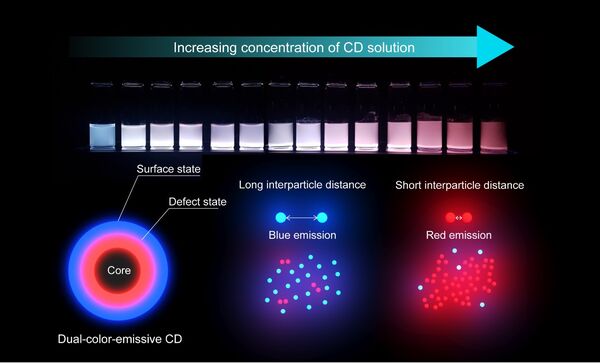
Researchers Control Multiple Wavelengths of Light from a Single Source
"KAIST researchers have synthesized a collection of nanoparticles, known as carbon dots, capable of emitting multiple wavelengths of light from a single particle. Additionally, the team discovered that the dispersion of the carbon dots, or the interparticle distance between each dot, influences the properties of the light the carbon dots emit. The discovery will allow researchers to understand how to control these carbon dots and create new, environmentally responsible displays, lighting, and sensing technology. Research into nanoparticles capable of emitting light, such as quantum dots, has been an active area of interest for the last decade and a half. These particles, or phosphors, are nanoparticles made out of various materials that are capable of emitting light at specific wavelengths by leveraging quantum mechanical properties of the materials. This provides new ways to develop lighting and display solutions as well as more precise detection and sensing in instruments." [...]

Scientists look to meteorites for inspiration to achieve critical element-free permanent magnet
"The U.S. Department of Energy’s (DOE’s) Critical Materials Institute has developed a low-cost, high performance permanent magnet by drawing inspiration from an out-of-this-world source: iron-nickel alloys in meteorites. The magnet rivals widely used “Alnico” magnets in magnetic strength and has the potential to fill a strong demand for rare-earth- and cobalt-free magnets in the market. Here on earth, the strongest permanent magnets are ones containing the rare earth element neodymium – NdFeB magnets. Next strongest are Samarium-Cobalt, or SmCo magnets. Before rare-earth magnets were developed in the 1970s, the strongest magnets were made of aluminum-nickel-cobalt, or Alnico, which are still in wide use today in applications ranging from electric motors to consumer electronics. The problem with these strong but earthly man-made permanent magnets is that they contain critical elements-- rare earths in the case of NdFeB and SmCo, and cobalt in the case of SmCo and Alnico-- ones that are in high demand for many technologies and for which manufacturers pay a premium for a sometimes unreliable supply." [...]

Light-Based Quantum Computer Exceeds Fastest Classical Supercomputers
"The setup of lasers and mirrors effectively “solved” a problem far too complicated for even the largest traditional computer system For the first time, a quantum computer made from photons—particles of light—has outperformed even the fastest classical supercomputers. Physicists led by Chao-Yang Lu and Jian-Wei Pan of the University of Science and Technology of China (USTC) in Shanghai performed a technique called Gaussian boson sampling with their quantum computer, named Jiŭzhāng. The result, reported in the journal Science, was 76 detected photons—far above and beyond the previous record of five detected photons and the capabilities of classical supercomputers. Unlike a traditional computer built from silicon processors, Jiŭzhāng is an elaborate tabletop setup of lasers, mirrors, prisms and photon detectors. It is not a universal computer that could one day send e-mails or store files, but it does demonstrate the potential of quantum computing. Last year, Google captured headlines when its quantum computer Sycamore took roughly three minutes to do what would take a supercomputer three days (or 10,000 years, depending on your estimation method)." [...]
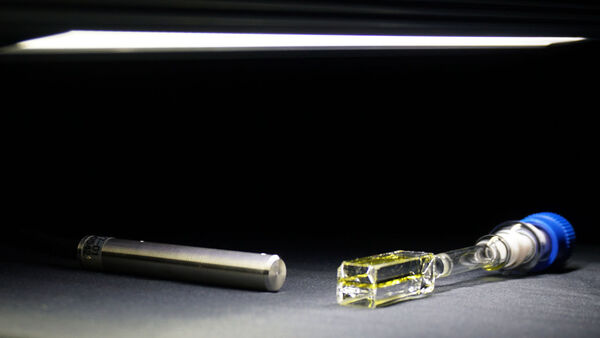
Molecules convert visible light into ultraviolet light with record efficiency
"Newly developed molecular system makes possible the efficient conversion of even weak visible light from sunlight and indoor LEDs into ultraviolet light Light-powered processes from hydrogen production to air purification could see a boost in performance under ambient light thanks to a new material system that can directly convert visible light into ultraviolet light with an efficiency that doubles previous records. Developed by researchers at Kyushu University, the system achieves a light upconversion efficiency of 20% at high intensities and maintains relatively high performance even under weak light, making it promising for harnessing visible light already around us to drive applications requiring high-energy ultraviolet light. While people often try to avoid ultraviolet light because of the damage it can do to skin, Nobuhiro Yanai, associate professor of Kyushu University’s Department of Chemistry and Biochemistry, has been searching for ways to increase the number of these high-energy rays to power photocatalysts that enable a variety of useful reactions from producing hydrogen for use in fuel-cell vehicles to purifying indoor environments. “Although dedicated light sources such as ultraviolet LEDs can be used to drive these reactions, they consume energy and increase complexity,” explains Yanai. “Instead, a much more elegant solution is to harvest the sunlight and indoor ambient light that is already all around us.” However, these ambient light sources generally have a large portion of their energy in the lower-energy visible region and only a fraction of it in the ultraviolet, so researchers have been searching for ways to directly convert visible light with wavelengths longer than 400 nm into higher-energy ultraviolet light. To do this, the research team led by Yanai and Nobuo Kimizuka have been focusing on a process called triplet-triplet annihilation." [...]

Electrons falling flat: Germanium falls into a 2D arrangement on zirconium diboride
"Scientists reveal 'flat band' behavior in 2D 'bitriangular' lattice of germanium, confirming earlier theoretical prediction Scientists have recently revealed, both theoretically and experimentally, that germanium atoms can arrange themselves into a 2D "bitriangular" lattice on zirconium diboride thin films grown on germanium single crystals to form a "flat band material" with an embedded "kagome" lattice. The result provides experimental support to a theoretical prediction of flat bands emerging from trivial atomic geometry and indicates the possibility of their existence in many more materials. The human mind is naturally drawn to objects that possess symmetry; in fact, the notion of beauty is often conflated with symmetry. In nature, nothing epitomizes symmetry more than crystals. Since their discovery, crystals have attracted a great deal of attention not only by their unique "symmetrical" aesthetic appeal but also by their unique properties. One of these properties is the behavior of electrons inside a crystal." [...]
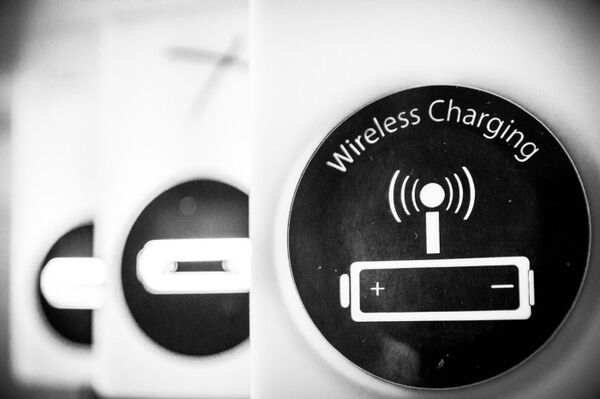
No Strings Attached: Maximizing Wireless Charging Efficiency with Multiple Transmitters
"New control strategy dynamically changes transmitter currents for optimal wireless charging in moving devices, such as robots and electric cars Scientists at Incheon National University, Korea, develop a control strategy that allows for transferring power wirelessly through multiple transmitter coils with maximum efficiency. Unlike conventional approaches in which only the transmitter closer to the receiver is active, this novel method dispatches the optimal amount of current to each transmitter, depending on the degree of coupling with the receiver. This technique will help surpass the hurdles of wired charging in electric vehicles and industrial robots. Wireless power transfer has proven to be quite useful in electronic devices such as medical implants and smartphones. In most cases, this is done by aligning or “coupling” two separate coils of wire (transmitter Tx and receiver Rx). The electrical current circulating in the Tx coil then creates a magnetic field that transfers energy to the Rx coil." [...]
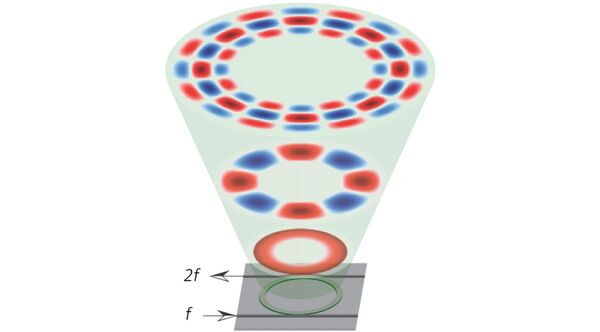
Enhanced Frequency Doubling Adds to Photonics Toolkit
"The digital age has seen electronics, including computer chips, shrink in size at an amazing rate, with ever tinier chips powering devices like smartphones, laptops and even autonomous drones. In the wake of this progress, another miniature technology has been gaining steam: integrated photonics. Photons, which are the quantum particles of light, have some advantages over electrons, the namesakes of electronics. For some applications, photons offer faster and more accurate information transfer and use less power than electrons. And because on-chip photonics are largely built using the same technology created for the electronics industry, they carry the promise of integrating electronics and photonics on the same chip. Tiny photonic chips have already been adopted in many places, including telecommunications networks (think fiber optic internet) and large data centers (think interfacing fiber-optics with electronics)." [...]
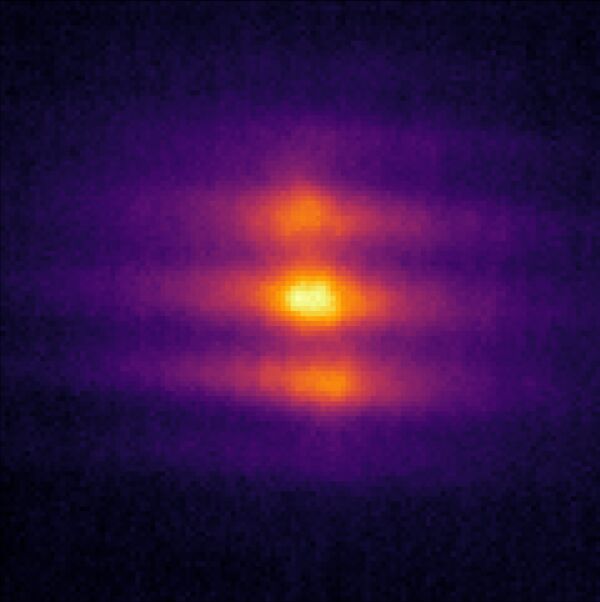
JILA’s Electric ‘Knob’ Tunes Chemical Reaction Rates in Quantum Gas
"Building on their newfound ability to induce molecules in ultracold gases to interact with each other over long distances, JILA researchers have used an electric “knob” to influence molecular collisions and dramatically raise or lower chemical reaction rates. These super-chilly gases follow the seemingly counterintuitive rules of quantum mechanics, featuring exact units, or quanta, of energy and often-exotic motions. Thus, the ability to control chemical reactions in stable quantum gases could enable the design of novel chemicals and gases, new platforms for quantum computers using molecules as information-rich qubits (quantum bits), and new tools for precision measurement such as molecular clocks. The advance is described in the Dec. 11 issue of Science. JILA is jointly operated by the National Institute of Standards and Technology (NIST) and the University of Colorado Boulder. “The molecular collisions in our experiment are very quantum mechanical, with their trajectories all quantized in terms of the way in which they can approach each other,” NIST/JILA Fellow Jun Ye said." [...]
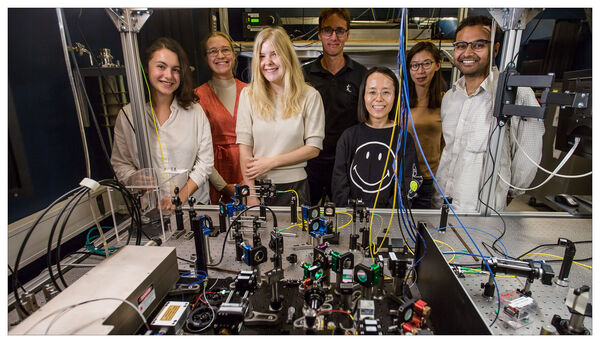
Major breakthrough: Copenhagen researchers can now achieve 'quantum advantage'
"University of Copenhagen researchers have advanced their quantum technology to such a degree that classical computing technology can no longer keep up. They have developed a chip that, with financial backing, could be scaled up and used to build the quantum simulator of the future. Their results are now published in Science Advances. First came Google. Now, researchers at the University of Copenhagen’s Niels Bohr Institute in collaboration with University of Bochum have joined Google in the race to build the world’s first quantum computer with what they are calling a "major breakthrough". "We now possess the tool that makes it possible to build a quantum simulator that can outperform a classical computer." [...]

Hidden symmetry could be key to more robust quantum systems, researchers find
"Researchers have found a way to protect highly fragile quantum systems from noise, which could aid in the design and development of new quantum devices, such as ultra-powerful quantum computers. The researchers, from the University of Cambridge, have shown that microscopic particles can remain intrinsically linked, or entangled, over long distances even if there are random disruptions between them. Using the mathematics of quantum theory, they discovered a simple setup where entangled particles can be prepared and stabilised even in the presence of noise by taking advantage of a previously unknown symmetry in quantum systems. Their results, reported in the journal Physical Review Letters, open a new window into the mysterious quantum world that could revolutionise future technology by preserving quantum effects in noisy environments, which is the single biggest hurdle for developing such technology. Harnessing this capability will be at the heart of ultrafast quantum computers. Quantum systems are built on the peculiar behaviour of particles at the atomic level and could revolutionise the way that complex calculations are performed." [...]
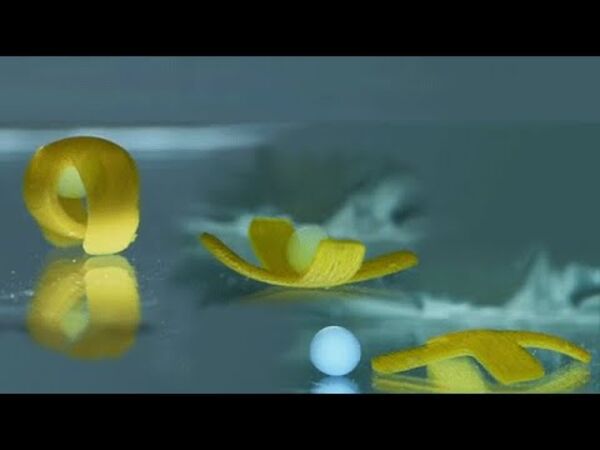
Aquatic Robot Inspired by Sea Creatures Walks, Rolls, Transports Cargo
"Northwestern Engineering researchers have developed a first-of-its-kind life-like material that acts as a soft robot. It can walk at human speed, pick up and transport cargo to a new location, climb up hills, and even break-dance to release a particle. Nearly 90 percent water by weight, the centimeter-sized robot moves without complex hardware, hydraulics or electricity. Instead, it is activated by light and walks in the direction of an external rotating magnetic field. Resembling a four-legged octopus, the robot functions inside a water-filled tank, making it ideal for use in aquatic environments. The researchers imagine customizing the movements of miniature robots to help catalyze different chemical reactions and then pump out the valuable products." [...]
Modelos 3D
Com a disponibilidade de ferramentas que permitem dar azo a nossa imaginação na criação de peças 3D e espaços como o thingiverse para as publicar, esta rubrica apresenta alguns modelos selecionados que poderão ser úteis.
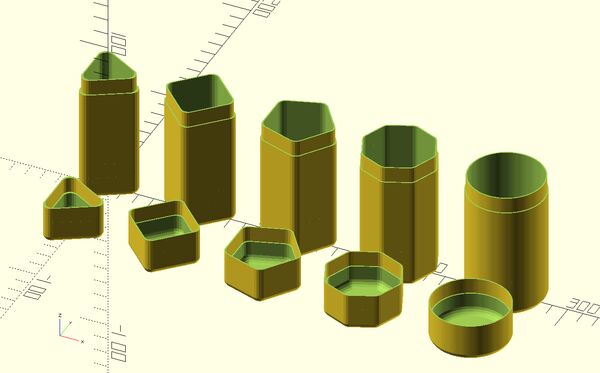
Customizable Symmetrical Pluggable Container
"This is a specialized version of the 'Pluggable Containers' thing: https://www.thingiverse.com/thing:4675184. It lets you create different symmetrical pluggable containers in the openSCAD and thingiverse customizer. These could be used as pill boxes, containers for cookies/gifts/, housings etc. Please share your makes, because I would like to know what it is used for in the real world ;). PS. : Since the thingiverse customizer seems to be broken right now I suggest that you download openSCAD version 2019.05 or higher from here: https://www.openscad.org/downloads.html and activate the Customizer in the 'View' menu." [...]
Documentação
A documentação é parte essencial do processo de aprendizagem e a Internet além de artigos interessantes de explorar também tem alguma documentação em formato PDF interessante de ler. Todos os links aqui apresentados são para conteúdo disponibilizado livremente pelo editor do livro.
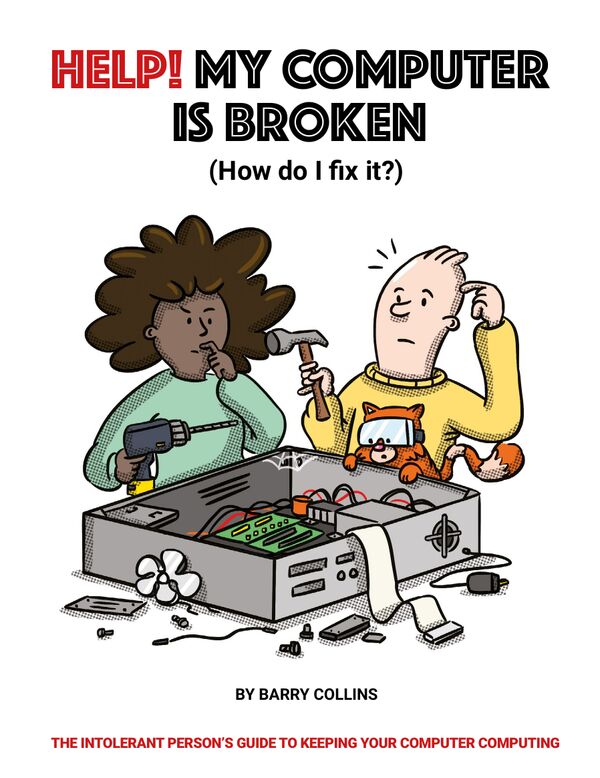
Help! My Computer is Broken
"THE INTOLERANT PERSON’S GUIDE TO KEEPING YOUR COMPUTER COMPUTING Want to know how to fix common computer problems, without having to wade through technical jargon? Or are you the family on-call technical support person, and need a bit of help? Help! My Computer Is Broken takes the most common computer problems and tells you how to fix them. It’s as simple as that! If you’ve ever wondered why your laptop won’t turn on, you can’t get a WiFi connection, your printer isn’t printing, or why everything is so slow – well, this is your book… 148 pages of essential information, to help you solve common issues such as: - Why can’t my computer see my printer?" [...]
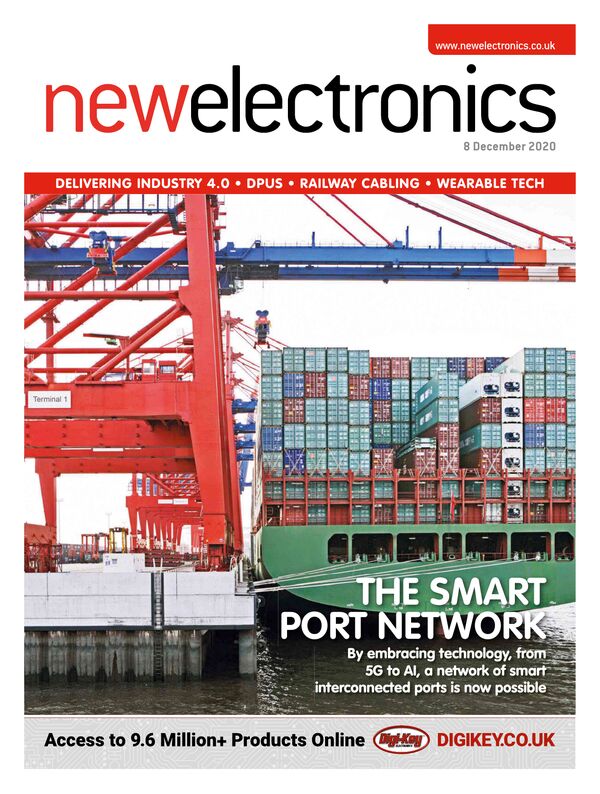
newelectronics 8 Dezembro 2020
"New Electronics is a fortnightly magazine focusing on technological innovation, news and the latest developments in the electronics sector. Downloadable as a digital page turner or pdf file, or offered as a hard copy, the New Electronics magazine is available in a format to suit you. " [...]
Projetos Maker
Diversos Projetos interessantes.

Yet another Glasses, RGB Glasses
"WS2812B LED embedded Glasses! Hey Guys, so this is my RGB Glasses Project which has 49 WS2812B SMD LED soldered on the front frame. this post includes the soldering process of SMD LEDs on Frame PCB with an SMD Hotplate and a custom Stencil. Also, this is all controlled by an sparkfun's Pro Micro but the future version will have an ESP12F Embedded on the Temple of glasses with a small Li-Po Battery. The normal Eye Glasses Consists of these general parts which are the RIM or Frame, Temple, Bridge, Lenses, etc. the Important structure of Glasses is its Frame and Temple and my goal is to make a PCB Frame so I took some reference from the Normal/Average design of glasses and made its outline in my CAD Software (OrCad Cadence)." [...]

WioTerminal IoTs MultiSwitch
"WioTerminal IoTs MultiSwitch using the IoTs technology to control three LED, also you are able to control by the buttons on the WioTerminal. In this project, I used the Wio terminal as a gateway and controller. The Wio Terminal is for upload the data to the Sinric Pro, also you can control the device from the Sinric Pro website or by the Wio terminal. There are three LED connecting the Wio terminal, I use three buttons on Wio terminal to control the LED also the LED state can be controlled from the Sinric Pro website. Features The device state can change by the remote control It using the IoTs technology to monitor the device state the device can control by the gateway which is Wio terminal" [...]
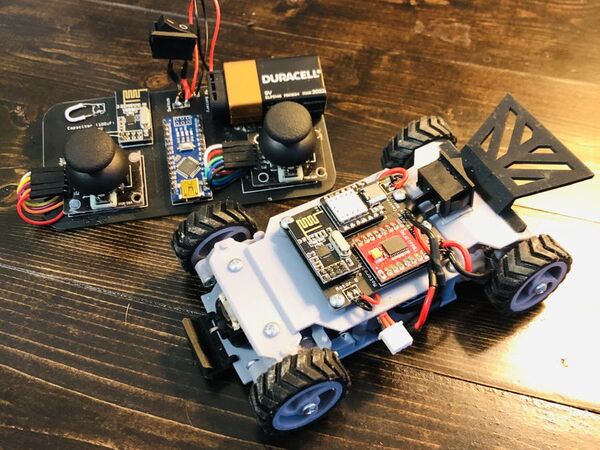
RC Car (Arduino-Based 3D Resin Printed) RC_Car_RP
"Version 1 of my design for an RC Car using an Arduino Nano and a Seeeduino XIAO. I call this RC_Car_RP. A lot can happen in a few weeks with enough resin and persistence. The first version of my 3D printed Arduino-based RC car is complete. This project started when I hacked my kid’s broken RC Car. I have now created RC_Car_RP (Rack And Pinion)." [...]
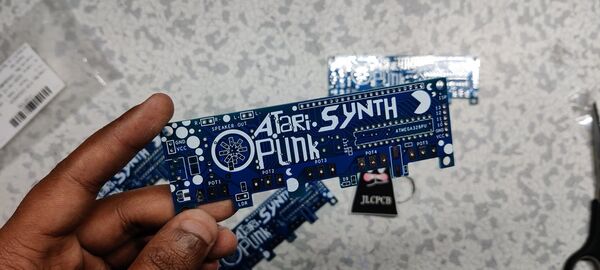
Atari Punk Synth V2
"Version 2 of my previous Atari Punk Synth project powered by a Minimal ATmega328-PU config and Mozzi library. During the lockdown, I made a Synth Box Project "Arduino Punk Synth" to annoy my neighbor with its weird sound. (well the actual goal was just to make an Arduino based Atari punk Synth device which generates cool like synth sound) That concept was pretty simple as it was using an Atmega328PU setup connected with 5 Pots for modulating sound frequency, pitch, etc, and a 3W Speaker for sound output. All things were enclosed nicely in a 3D Printed Body, you can check that project out from here- https://www.hackster.io/Oniichan_is_ded/arduino-atari-punk-synth-2934e8 Later I added a PAM8403 Audio AMP Module to increase the sound loudness. " [...]

Wireless Control Via Infrared (IR)
"Infrared, sometimes called IR, is light that is just below the visual spectrum. In fact, IR is part of the electromagnetic radiation (EMR) spectrum, and it has wavelengths longer than those of light we can see. Much of the thermal radiation sent out from heated objects is IR. Many IR systems, for Makers using Arduino or other microcontroller boards, come in inexpensive kits, which include a receiver, transmitter, and Dupont hookup cables. One such kit is shown in an attached still photograph. I purchased this inexpensive kit as part of a multi-kit order." [...]

FPGA HW Acceleration Social Distancing Monitor
"Social distance monitor using yolov3 and DPU acceleration on Ultra96v2 The world is now under the cloud of Covid-19 and it has been a hard time when the virus is spreading across the world. Since keeping distance and wearing a mask really help to reduce the risk of infection. So I decide to do something for distance detection, which I know is just a prototype and far from being used in real life. But I believe with the combined efforts of all around the world, we can overcome such frustration. I have not that much experience in using Xilinx products and FPGA development. This contest really gives me a change to know the power and flexibility of FPGA." [...]
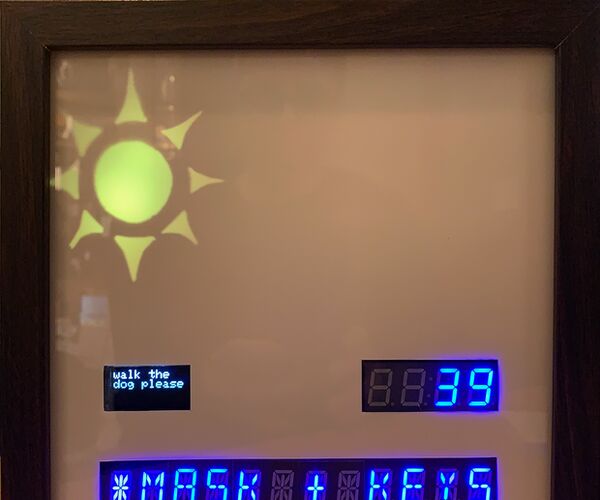
Weather Note
"This is a combination weather station and reminder. We can all check the weather on our phones, but sometimes and especially when one is trying to get out the door all that is needed is a quick way to the weather conditions. This weather station supplies a quick visual of current conditions: sunny, cloudy, rainy or snowing, the temperature and a brief note. Additionally, a motion-activated sensor triggers a scrolling display that offers up a helpful message: "mask + keys" Description: This station is built in Arduino and combines IoT (Internet of Things) feeds and triggers. There are four main displays and one motion sensor. Display 1: Weather conditions light up neopixels behind a stencil of a sun, clouds, rain drops and snowflakes." [...]
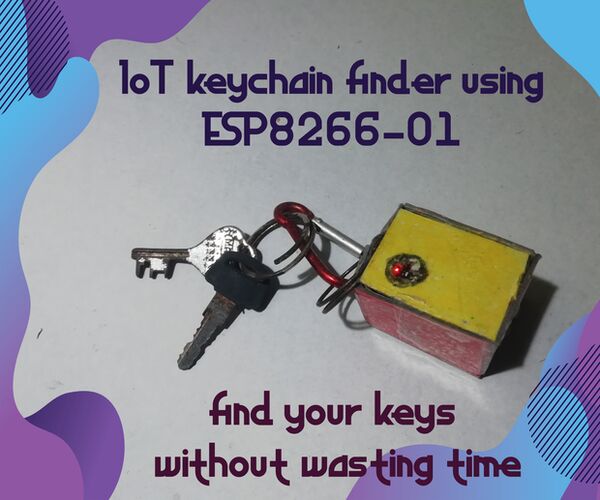
IoT Keychain Finder Using ESP8266-01
"Are you like me always forgetting where you kept your keys? I can never find my keys on time! And because of this habit of mine, I have been late for my college, that limited edition star wars goodies sale (still fretting! ), a date (she never picked my call again!) So what exactly is this IoT Keychain Well let me give you an abstract idea, imagine you planned a dinner with your parents at a posh restaurant. You were just about to hit the road suddenly the keys are missing, ouch!" [...]

Gimbal Stabilizer Project
"How to Make a Gimbal Learn how to make a 2-axis gimbal for your action camera In todays culture we all love recording video and capturing the moments, especially when you are a content creator like me, you sure have faced the issue of such shaky videos from time to time. So in this blog we will make a DIY version of motorized Gimbal" [...]
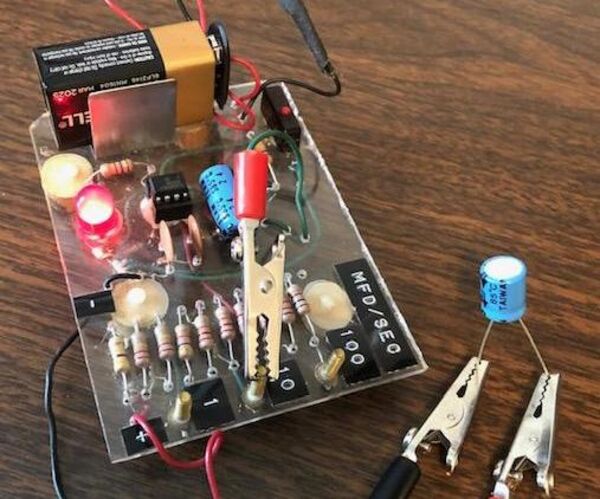
555 Capacitor Tester
"This is something I built from a published schematic late in the 1980s. It works very well. I gave away the magazine with the schematic because I believed I would never need it again and we were downsizing. The circuit is built around a 555 timer. These are very inexpensive and very available. I am always nervous about ruining a semiconductor by applying too much heat while soldering, so I used an 8 pin socket and soldered it into place." [...]

Smart Fitness Watch With ESP8266 - VScode
"An Esp8266 based fitness watch, completely made from scratch! This shows the time by using NTP so the time is very accurate! and along with time this can also detect the motion of your hand on all 3 axis and warn you with haptic feedback according to the programmed motion. It can even measure BPM and display with a mini graph on the display(currently not working that great, will be fixed soon)! It can also drop an email to your friend/family according to the programmed-motion inside the watch. So how is this watch compared to other fitness watches out there?" [...]
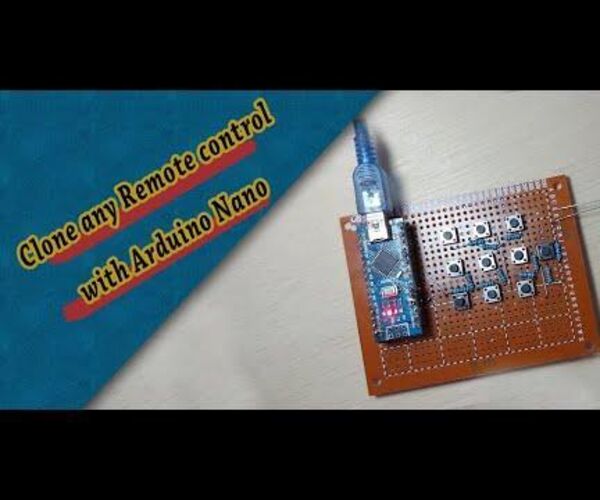
Clone Any Remote Control With Arduino Nano
"Clone any Remote control with Arduino Nano" [...]
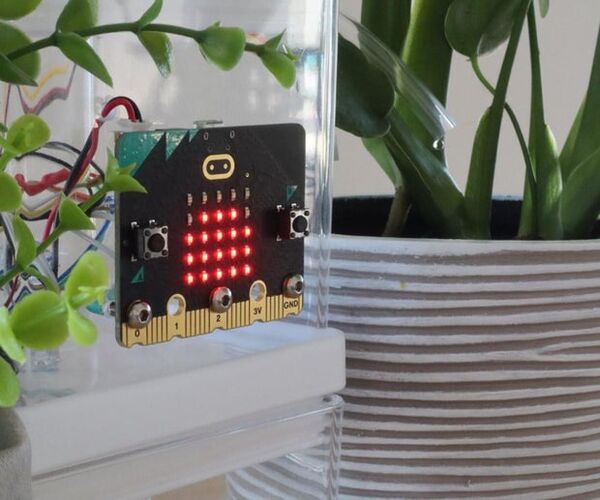
Automatic Plant Watering System Using a Micro:bit
"In this Instructable, I'm going to be showing you how to build an automatic plant watering system using a Micro:bit and some other small electronic components. The Micro:bit uses a moisture sensor to monitor the moisture level in the plant's soil and then switches on a small pump to water the plant if the soil gets too dry. This way, your plant is always looked after, even when you've forgotten about it or you're away. If you like this Instructable, please vote for it in the Block Code contest! Supplies: MicroBit Capacitive Moisture Sensor DC Pump Relay Module Ribbon Cable Storage Containers (Not the same, but should work) Power Supply M3 Screws I’ve used the MicroBit version 2, but this project can be made using the first version as well. " [...]

Bread Board Wristwatch
"Here's a fun project making a geeky wristwatch, using the QDSP-6064 bubble LED display. The clock components are plugged in to a "breadboard". These type of boards are usually used for prototyping electronic circuits. Now you can have an electronics prototyping platform on your wrist at all times! There is an rechargeable PSU underneath the bread board, delivering 3.1V. The PSU is charged via an USB-micro connector on the side." [...]

Low-Cost Room Thermometer Using 16×2 LCD and Atmega328
"This is an easy to build small size and low-cost room thermometer. The project consists of LM35 analog temperature sensor, 16×2 LCD, and an Atmega328 chip. This compact board is Arduino compatible and provided with an onboard connector for Boot-Loader burning and Arduino IDE programming. Board also has 2 additional connectors for analog input and digital I/O. Trimmer potentiometer PR1 helps you to adjust the contrast of the LCD. Example Arduino Code for the thermometer is available as a download to test the board." [...]

Deep Picar
"Autonomous cars have been a topic of increasing interest in recent years as many companies are actively developing related hardware and software technologies toward fully autonomous driving capability with no human intervention. Deep neural networks (DNNs) have been successfully applied in various perception and control tasks in recent years. They are important workloads for autonomous vehicles as well. What is a Deep PiCar ? Deep Picar is a small scale replication of a real self-driving car called DAVE-2 by NVIDIA. Using Deep Picar, we analyze the Raspberry Pi computing capabilities to support end-to-end deep learning based real-time control of autonomous vehicles." [...]
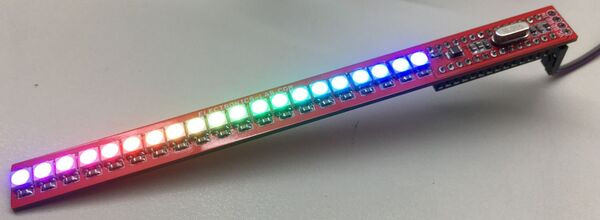
Smart RGB LED Light Stick – Arduino Compatible
"This is a Smart LED light stick that contains 20 x WS2812B single wire addressable full colors RGB LEDs and Atmega328 microcontroller. These full colors chainable intelligent RGB LEDs work with a single wire addressable protocol thus they require a micro-controller to generate the pulse train to control the colors and flashing effects. Refer to the datasheet of LEDs to decode the various colors flashing effects. The operating supply of the circuit is 5V DC with a maximum current of 1A. Example Arduino code will help you to test the board. The Atmega328 chip can be programmed using the Arduino platform, we have used the DIP package of the microcontroller for easy programming using Arduino UNO and insertion of the programmed chip to the LED stick." [...]
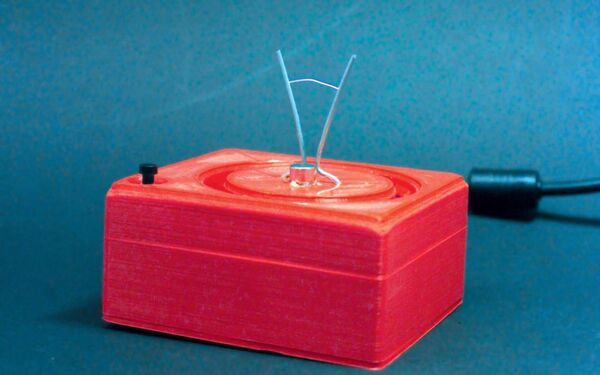
Mini Jacob’s Ladder
"In times past, Jacob’s ladders were often featured in horror flicks for their decorative effect. As the bright purple spark climbs between the electrodes, growing longer as it rises, it crackles with a sound that says “mad scientist”! As a spark gap, the Jacob’s ladder also makes a very good high voltage surge arrester, and they’re still used for this purpose today, such as on overhead wires for trains. If you’re looking for a home-friendly version, you’ll find one on Thingiverse. Created by Matthias Balwierz, aka bitluni, it’s all packaged inside a 3D printed enclosure; you can see it in action in Matthias’ video. More details on this electrifying project follow below." [...]
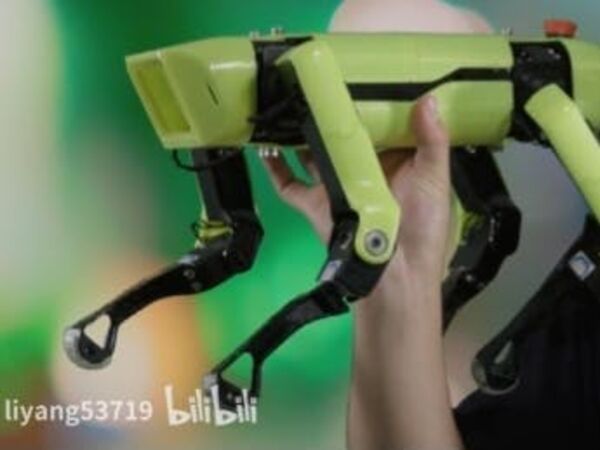
Ultra96_robota
"Use the camera and Vitis-AI platform to make a robot dog that can recognize people and cats. We will make a robot dog. We assume that it likes to be close to people, but is afraid of cats. Therefore, this robot dog needs to have the ability to recognize people and cats. Now, neural networks can easily find objects in images and distinguish their types. We will use the Avent Ultra96v2 development board as the main control of the robot dog." [...]
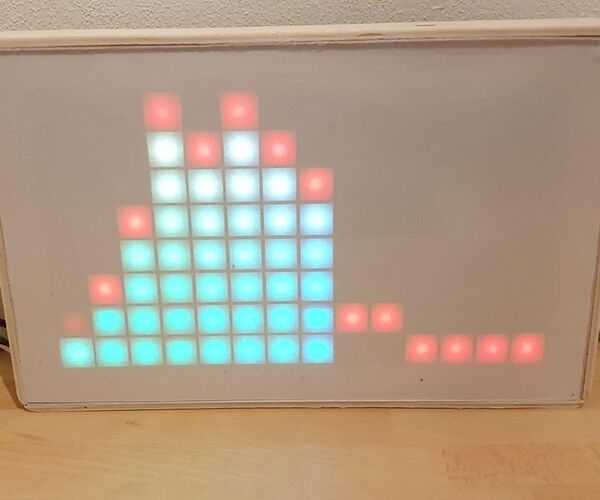
14band Graphical Equalizer
"Here comes a simple Graphic Equalizer showing 14 audio bands from 60Hz up to 16kHz. It consist of a PCB based on MSGEQ7 and ESP dev board. Since a MSGEQ7 chip recognizes 7 bands only and an ESP dev board gives us a chance to read a single analog input only, there was a trick used to make it working for 2x7 bands at the same time. I am sure this trick could be used as an inspiration for another projects as well, the same way as the project could be extended to show different animations or further modified to a stereo input instances relative simply. " [...]

Practical PIR for Home Use
"Like many of you out there working with home automation projects, I was looking to build a functional PIR sensor for automating some corner turns in my own home. Although light switch PIR sensors would have been optimal, you can't bend a corner. This project went through a couple iterations and I ran the attempts through many other available tutorials online and couldn't find one that worked for me. If you want to just get right to the making, skip ahead to step 3, otherwise continue on to step two where I'll discuss the development. Supplies: Soldering Iron Solder and Flux for electronics Spare hookup wire 3D Printer Breadboard Basic Understanding of Hassio Basic Arduino Programing skills" [...]

A Bluetooth ESP32 TFT + Touch Macro Keypad)
"Controlling your computer by using hotkeys and macros is a great way of speeding up your workflow. Unfortunately a device dedicated to doing that (for example Elgato's Stream Deck) will cost you about $120. That is why I designed FreeTouchDeck. FreeTouchDeck will cost you about $20 (including shipping!) to make. It uses an ESP32 and a 3.5" touch screen." [...]

One Arm Bandit
"A tri-color personal slot machine with a 3D printed realistic lever to spin the wheels. While looking at projects on the Adafruit site, I came across a fruit machine project that has a cool 3D printed lever that incorporates its own return spring. The Adafruit fruit machine is built around a fairly large 32x64 RGB Matrix (4mm pitch) display. Since I had three 60mm x 60mm Red/Green LED matrixes that were left over from another project, I thought that I would modify my Matrix Slot Machine to incorporate this 3D printed lever. Design The Red/Green matrix modules are common anode. Each matrix has 16 cathodes (8 red and 8 green)." [...]
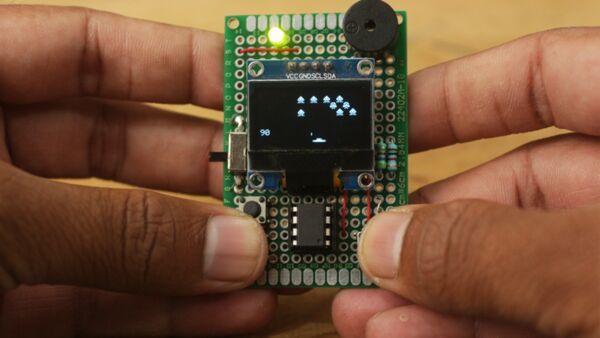
How to make Attiny based mini game console
"ello friends in this post we’ll se how easily we can build a Attiny based mini game console. In this mini game console you can play some retro games, which is obviously not very high tech but yes you get a good experience of making your own game console. So in post I’ll tell you in detail how to can build you game console what components you need and how to program Attiny 85 microcontroller. Components required for Attiny based mini game console Here is the list of component you need to build your Attiny 85 based game console. Attiny 85 microcontroller 10K Ohm x 2 6.8K Ohm resistor x 1 1K Ohm resistor x 1 LED 5MM x 1 6mm tactile PB X 3 0.96 Oled display( gnd,vcc,scl,sda) x 1 slide switch x 1 CR2032 battery x 1 CR2032 battery holder x 1 3V Buzzer x 1" [...]
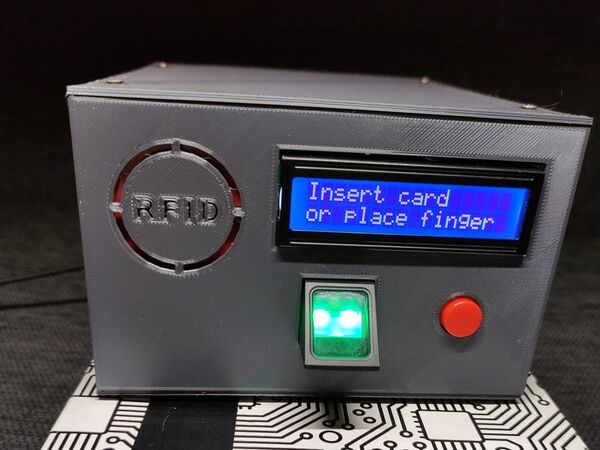
RFID & Biometric PC Log In/Out Interface
"This project is an all-in-one plug-and-play DIY PC unlock interface, that uses RFID card or fingerprint scan to log in/out your Windows PC. This is a project I made for my microprocessor programming laboratory at my university. The project goals were to log in and out of my PC using RFID card or fingerprint scan. I value privacy a lot, so ability to log in and out in mere seconds, without typing password is a life saver for me. This interface is fully open source, you can use it and modify as you please. Two very important things here: You can use this project with only RFID reader with absolutely no changes in code, but using it with only fingerprint scanner require full code rebuild." [...]
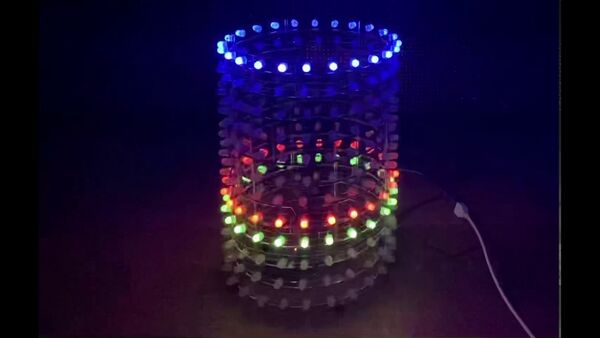
LED Tower Art
"Lightshow created from a cylinder of 288 RGB LEDs The inspiration for this project is the numerous curves that are created by the intersection of a cylinder and a plane! I wanted to create an LED light show, but I have already built several LEDs cubes recently. I wanted to do something different, both from a hardware and software standpoint. And I thought this would be a fun environment in which to program –something with as much potential as a cube, but which is distinctly different! I've chosen to use 8mm APA106 programmable LEDs for this tower. There're more expensive than regular RGB LEDs, but they are so much easier to work with both from a hardware and software standpoint." [...]
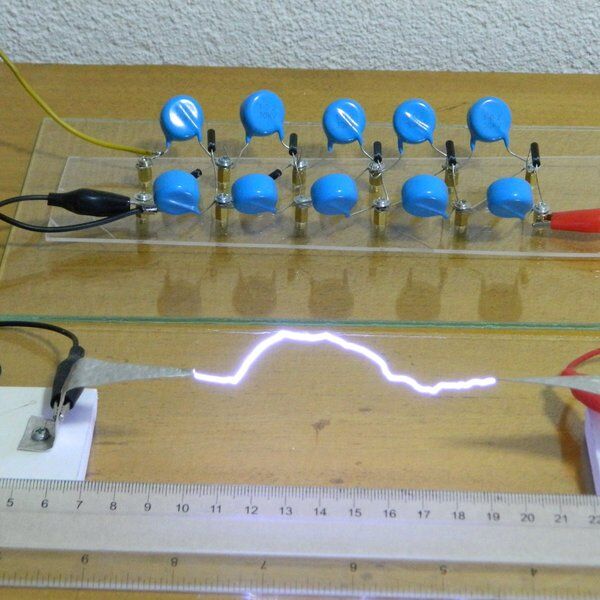
DIY Cockroft-Walton voltage multiplayer (100000V)
"Flyback trafocascade driven voltage multiplayer The CockcroftWalton generator, or multiplier, is an electric circuit that generates a high DC voltage from a low-voltage AC or pulsing DC input. Multipliers are typically used to develop higher voltages for relatively low-current applications such as laser systems, X-ray systems, air ionisers, cathode ray tubes etc... We can divide the whole device into several parts: - DC voltage source consisting of mains transformer and rectifier, in this case with output voltage of 15V and current of 5A. - AC high voltage source, with an output value of 5 to 10 thousand volts. This assembly consists of a driver circuit and a flyback transformer from an old TV. In my case it is a "Plasma Speaker" device I have made before. Here you can create a simpler driver for example with 555 IC, for which is also given the link to the schematic below." [...]
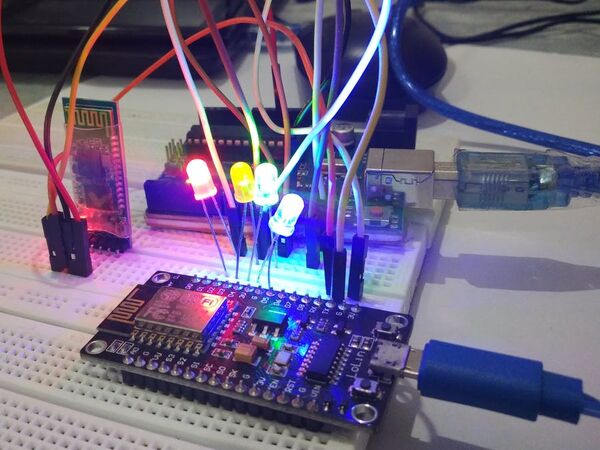
IoT based Home Automation with & without Internet
"Many IoT based Home Automation projects crashes when the Internet speed goes down. So, within this project, I tried to solve this issue. Introduction: Many IoT based Home Automation projects crashes when the Internet speed goes down. So, within this project, I tried to build such an IoT prototype that can automate the Home not only when Internet speed is good but also when Internet speed goes down. In this project, I’m going to use OSH NodeMCU V1.0 ESP8266 Development Board and Bluetooth HC-05 Module for communication & control of 4 AC loads connected to NodeMCU with Blynk Android App & my custom-made Bluetooth Automation App. Blynk App can be used when Internet speed is good on both sides & Bluetooth Automation App can be used when you are near the project & not have the internet at all." [...]
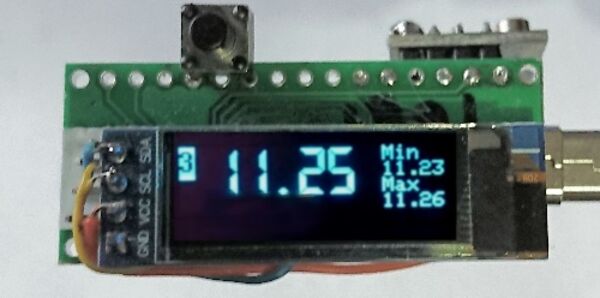
Multi-channel-wireless-voltmeter
"A multi-channel wireless (2.4GHz) voltmeter display using ATTINY402, Arduino nano, NRF24L01+ and 128x32 I2C OLED. The transmitter is optimised for low power and will run from a battery for weeks or months depending on usage, sample frequency and of course battery capacity. Range is a few meters to tens of meters depending on how well the radio module is isolated from the controller, and the RF power setting. I did the project as an exercise in minimalism. Developed on Arduino" [...]

Arduino MIDI Poly Synth - MiniSy (Musical Instrument)
"3 Oscillators Polyphonic Synth with MIDI using the Arduino Nano. My simple project of a Polyphonic Synthetizer using the Arduino Nano. It is simple but it is possible to play music with it. Up to 3 musical notes can be played simultaneously, so it is possible to play chords on it. I wrote this code for fun, it is a polysynth with 3 oscillators (polyphony = 3) and respond to MIDI notes. The keyboard is used here only to send the MIDI notes to the arduino (act as a MIDI controller) and the sound is actually generated by the arduino and comes out of its digital pins." [...]

Car HUD - Windscreen Display for Speed & Compass
"Drive without distracting your sight, take care of speed limits, "fucking" speed traps taking under control your car speed on windscreen! Software point of view: Projecting the circuit the most difficult and confusing part have been the connection of the displays 7 segments to the BCD decoders because number are "inverted", mirrored. There are 3 buttons: + and - for increasing/decreasing brightness and S/H to switch between Speed and Heading; in case of heading also the red LED is on, it means "degrees" of compass (1-360°). The brightness is saved in EEPROM memory after a minute. Brightness is changed both on displays and on LED by the way of PWM pins. An important part of the code is for collecting datas from GPS, mainly speed and direction, taking them out from every NMEA sentence." [...]
That's all Folks!



